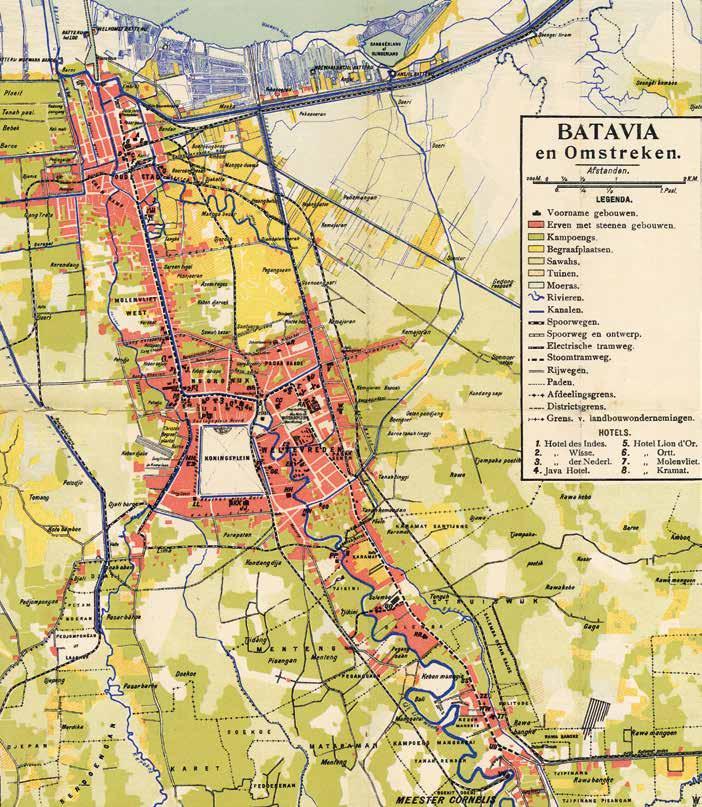FOREWORD
T
his book is the continuation of a personal journey of discovery to try and understand the development of Jakarta and to answer the questions: what did Jakarta look like in the past and how did it evolve into the city it is today? The journey began with my first book, Batavia in Nineteenth Century Photographs, which covers the period from the end of the 1850s through to the middle of the 1890s, drawing upon 155 of the earliest photographs ever taken of the city. This second book, Greetings from Jakarta: Postcards of a Capital 1900-1950, provides a window into the period 1900 to 1950 and reveals Jakarta to us through 460 picture postcards published between the 1890s and the late 1940s that I have collected over the past twenty years. Accordingly, both books combined show us the development of a capital city over the span of a century from the middle of the 19th century to the middle of the 20th century, in essence the last hundred years of colonial rule. This journey of discovery is a very personal one for me as a resident of Jakarta from 1989 until 2006 and then again from 2008 until the time of writing in 2012. Jakarta is the city where I have spent most of my adult life, where I married my wife Theresia in 1992 and where our two children Maxi and Nicole were born in 1993 and 1995 respectively. It is the city where I have spent hundreds of hours over the past fifteen years walking around the streets, with camera in hand, looking for the old buildings, shops, offices, houses, schools, landmarks, monuments, infrastructure, large roads and small alleys which appear in the postcards and in
the old photographs to see if they still exist and, if so, what they are used for now, and if not, what exists in their place? Throughout my research the “concept of place” has been very important to me. I have only included postcards in this book where I could precisely identify the location of the subject. I wanted to go back to those locations and stand where the photographers of the past had stood all those years before and try and see what they saw. In an old Jakarta guidebook, published around 1926, it was observed “Historic Jakarta...! What a pity it is that so little is left of the old town of Batavia, once in the 17th and 18th centuries, known throughout the East as the ‘Queen City of the Orient’.” If a writer eighty-five years ago can lament the loss of so much of Jakarta’s history, we can only say that he was fortunate by comparison to ourselves to have still had so many more reminders of the city’s past around him then than we do now early in the 21st century, when so large a part of Jakarta’s heritage has either been destroyed or just allowed to decay. As with my first book, I invite readers to share my personal journey of discovery of Jakarta’s evolution through this book in the hope that they will have a greater appreciation of the development of this wonderfully fascinating city and gain insights that they might not have noticed before. I also warmly welcome any comments and additional information from readers as well as news of other postcards showing aspects of Jakarta that do not appear in this book to: scott.merrillees@gmail.com. Scott Merrillees Jakarta, August 2019
9

